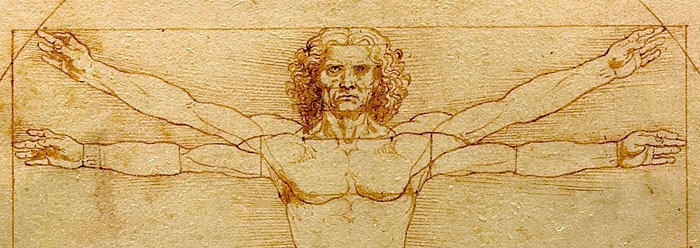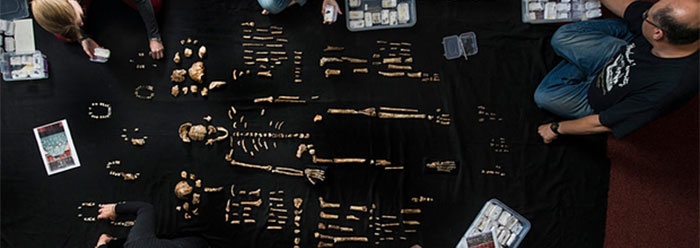As one might imagine, different answers to this question come from different "authorities." Obviously, creationists and evolutionists disagree, but major schools of thought vie among evolutionists.
Earlier in this century, it was thought that as apes became humans, they evolved bigger brains. Now, most evolutionists hold the view that brain size is secondary in importance to erect posture. Walking upright allowed some apes to use their hands more to fashion and use tools. But still controversy swirls, with some thinking that tree-dwelling apes could sometimes walk erect, while others contend that pre-humans lived on the plains and never lived in trees.
The tree-dwelling view was given a boost recently by the discovery (or re-discovery) of four foot bones in a sack of bones originally collected in the 1920s and thought to be animal bones. Drs. Tobias and Clarke identify the heel bone as rather human-like, but the bones leading to the big toe indicate that it was long and curved, capable of grasping, just like a chimp's foot. Here was proof! A transitional form! A chimp-like creature which swung through the trees had a heel more reminiscent of upright-walking humans! Nearly every newspaper in the country, maybe around the world, carried the news.
The find was placed within the grouping known as "Australopithecus," which includes the famous "Lucy." "Lucy" was quite chimp-like, 3'6" tall, with a chimp-sized brain, chimp-like dentation, and a body style little different from modern chimps. Only controversial (among evolutionists) interpretations of Lucy's hip and (even more questionable) knee give any hint of slightly more erect posture than chimps. In short, Lucy was a chimp-like creature, perhaps with some unusual features, but chimp-like nevertheless.
But Lucy's feet weren't preserved. Now this find takes her and her kin back into the trees. All the while labeling the foot as a human ancestor, Dr. Tobias claimed: "Australopithecus was far more ape-like in many of its features than we'd ever dared imagine previously." Even more remarkably, he said this fossil foot solved the mystery of who had made the Laetoli footprints found in Tanzania 20 years ago, which were indistinguishable from human footprints.
It seems that investigators are seeing what they want to see. The evidence points to Australopithecus being an ape, perhaps with certain habits and features different from modern apes, but still an ape. Large gaps between humans and apes are ignored.
Creationists contend that while humans and apes have much in common (after all, we live in the same world, breathe the same air, eat the same kinds of food, have hearts that pump blood, etc.), the differences lie in other areas. Created in the image of God, mankind possesses the ability to communicate abstract thought, appreciate beauty, express love, and know right from wrong. Most importantly, man has an eternal spirit and can choose to accept or reject the Creator's kingship over their lives.
It seems Australopithecus fossils are a convenient (but lame) excuse for rejection.
*Dr. John Morris is the President of ICR.

















